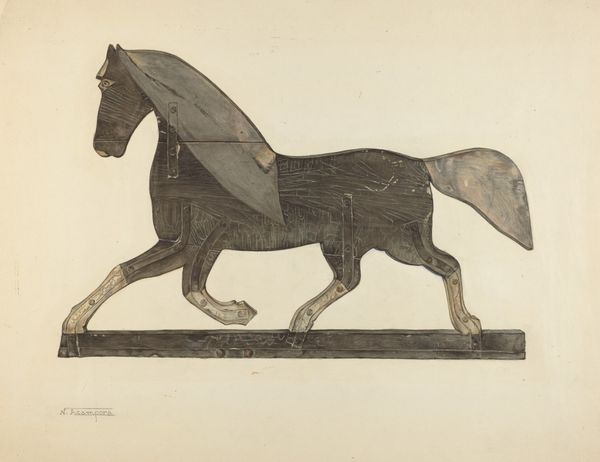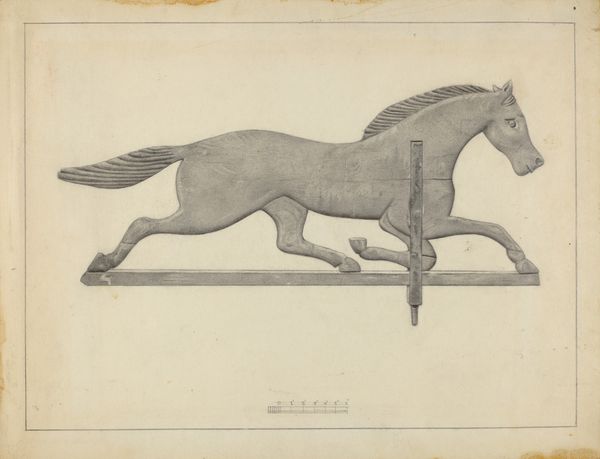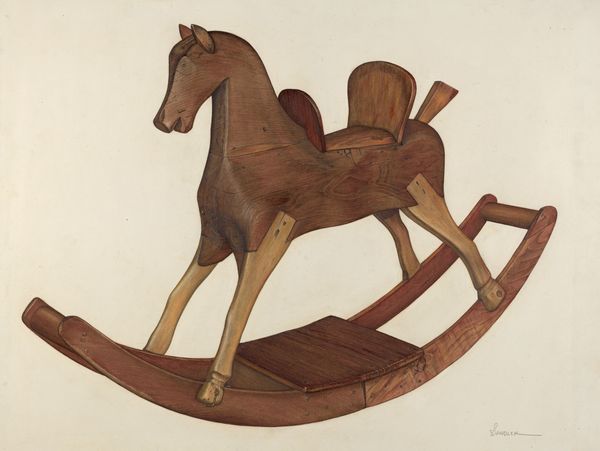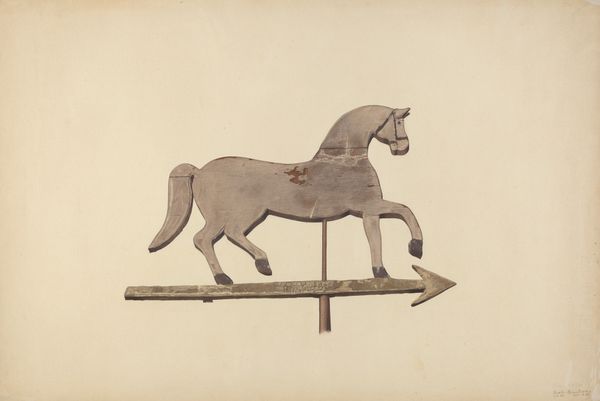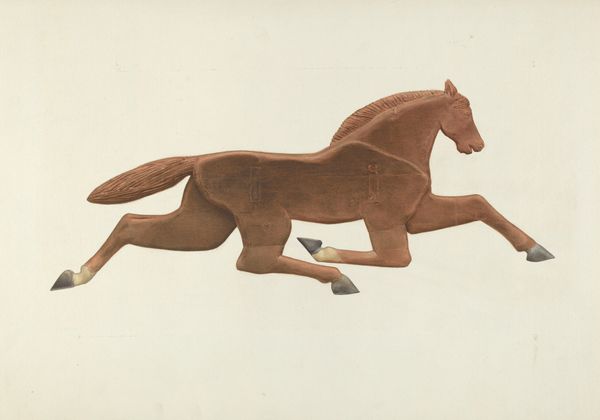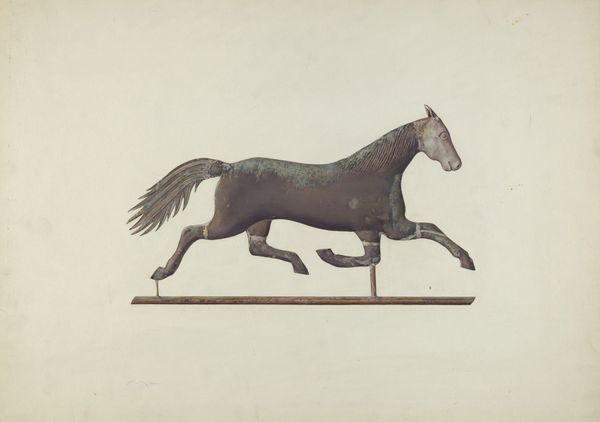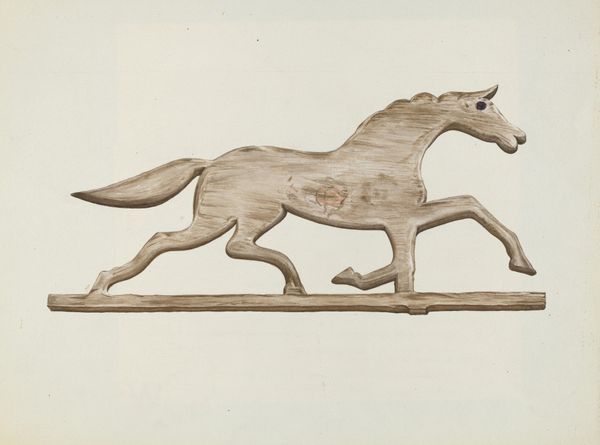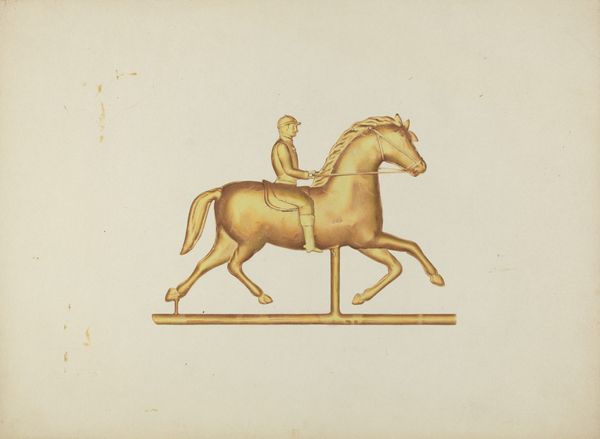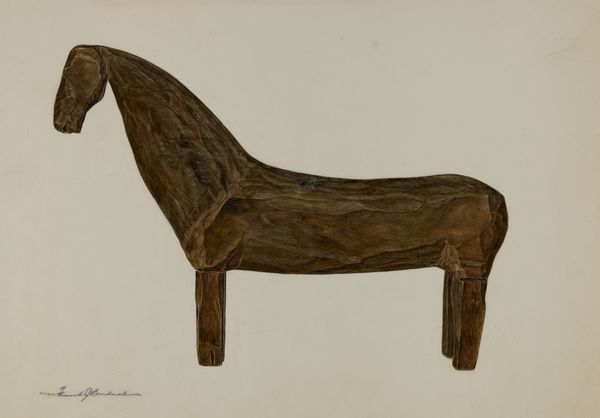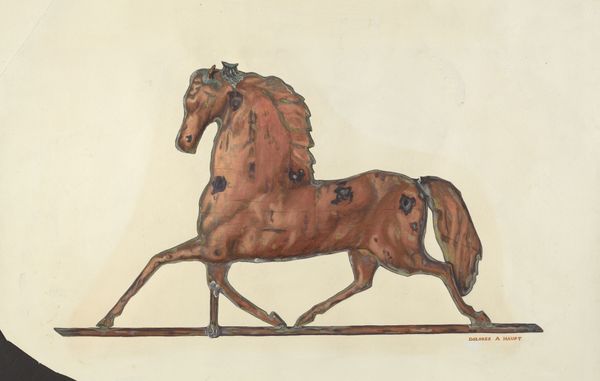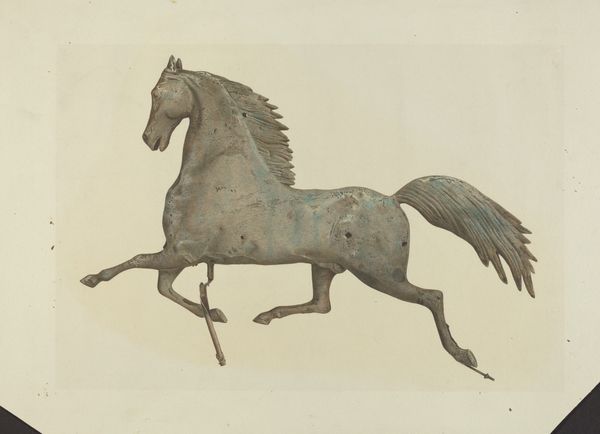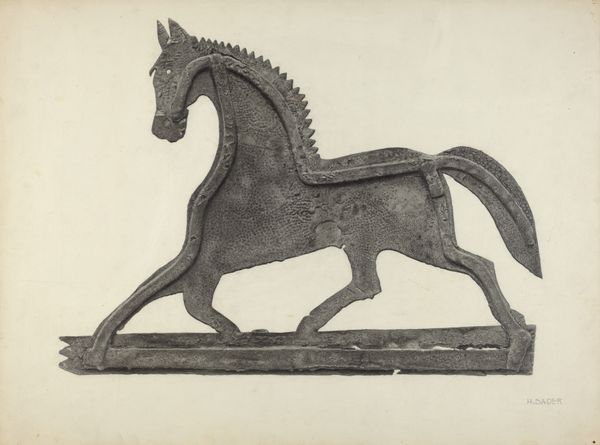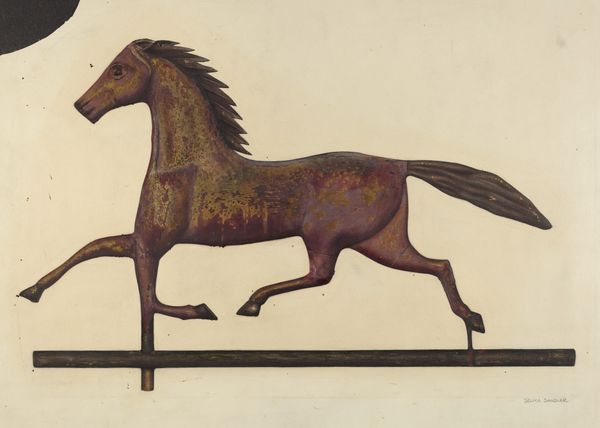
drawing, carving, wood
#
drawing
#
carving
#
landscape
#
figuration
#
folk-art
#
wood
Dimensions: overall: 36.6 x 56.8 cm (14 7/16 x 22 3/8 in.) Original IAD Object: 34 1/8" long; 16" high
Copyright: National Gallery of Art: CC0 1.0
Curator: Well, that immediately strikes me as something both strong and graceful, yet also strangely rustic. Editor: Indeed. What we're looking at here is Joseph Rothenberg's "Weather Vane" from around 1938. The piece is a drawing, predominantly depicting a carved wooden horse. Curator: Wood is such a common and yet versatile medium. I wonder, was this created as an object for functional use, or was it conceived primarily as art? The visible wood grain really emphasizes its humble origins and laborious fabrication. Editor: It speaks to a specific period in American folk art history when the distinction blurred. We see a clear dialogue between practicality and aesthetics. During the pre-war era, weather vanes were significant indicators of agricultural stability, reflecting social-economic factors rooted in agrarian life. Curator: Absolutely, and to extend that point further, think about how access to materials informed this kind of work. Were certain woods more available than others? Was the carver trained, self-taught, part of a guild? Editor: That gets at the heart of the narratives surrounding folk art. This particular figure has the quality of a trotting horse and feels emblematic. Considering Rothenberg's time, it could symbolize freedom, power, and prosperity – powerful concepts during periods of instability. Its display as a weather vane puts those hopes on literally public display. Curator: Right, the positioning of a weather vane at the top of barns, or on meeting halls, made it an accessible art form. Its purpose was meant to communicate far beyond the simple tracking of meteorological shifts. Editor: Agreed, by positioning it high up, it gains symbolic weight within the community's consciousness. It merges utility with artistry to broadcast messages far beyond a single household. It tells a story of cultural values as much as forecasting the wind. Curator: Fascinating to think about the intersection of art, labor, and the everyday weather we depend upon. I really do appreciate the perspective it brings to social artistic history. Editor: Exactly, a blend that allows us to consider what art means at street level, literally speaking!
Comments
No comments
Be the first to comment and join the conversation on the ultimate creative platform.
